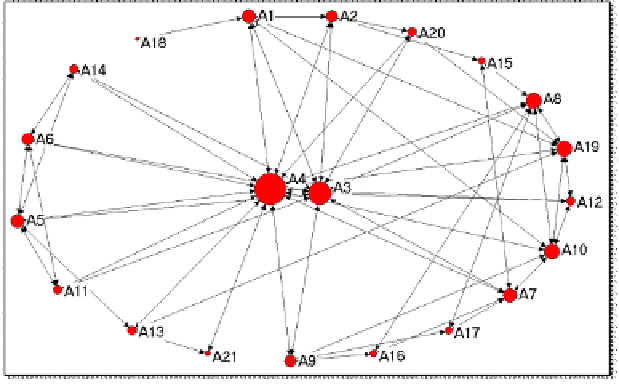Information Technology Reference
In-Depth Information
decreases from LCE-InsNet to OptoNet, except for structural holes. It is likely that
direct ties, closeness, betweenness, and coreness are best to be explained toward
innovation performance in LCD-InsNet. Because this cluster contains all LCD
firms and related institutions, the cluster is a fully complete network from an
industrial cluster's perspective.
Fig. 7
Two key players in LCDNet
4.5 Remarks
All in all, network position indeed influences innovation performance from our
results of analysis. We expected that a firm with more direct ties will lead him to
access more information and knowledge and then get a better innovation
performance. This hypothesis was supported. It means that rich and diverse sources
of information facilitate knowledge generation and lead to better innovation
performance. Structural holes also prove to have a significant impact on innovation
performance in three networks (except LCDNet). According to Burt (1992), actors
in a network rich in structural holes will be able to access novel information from
remote parts of the network, and exploit that information to their advantage. But in
LCDNet the actors are quite close, therefore actors interact frequently. It is likely
that the closeness of the LCDNet makes it less susceptible to structural holes, and
thus structural holes do not influence innovation performance at LCDNet.
However, structural holes do have significant impact on innovation performance at
LCD-InsNet, ColNet and OptoNet. According to Burt (1992), once other actors are
added to original network, the network becomes bigger in terms of the number of
exchange relationships. New actors provide even more diverse information and
knowledge. In such a new network, actors with structural holes have an easier time
exploiting these information and knowledge to their innovation performance than
actors in LCDNet.

